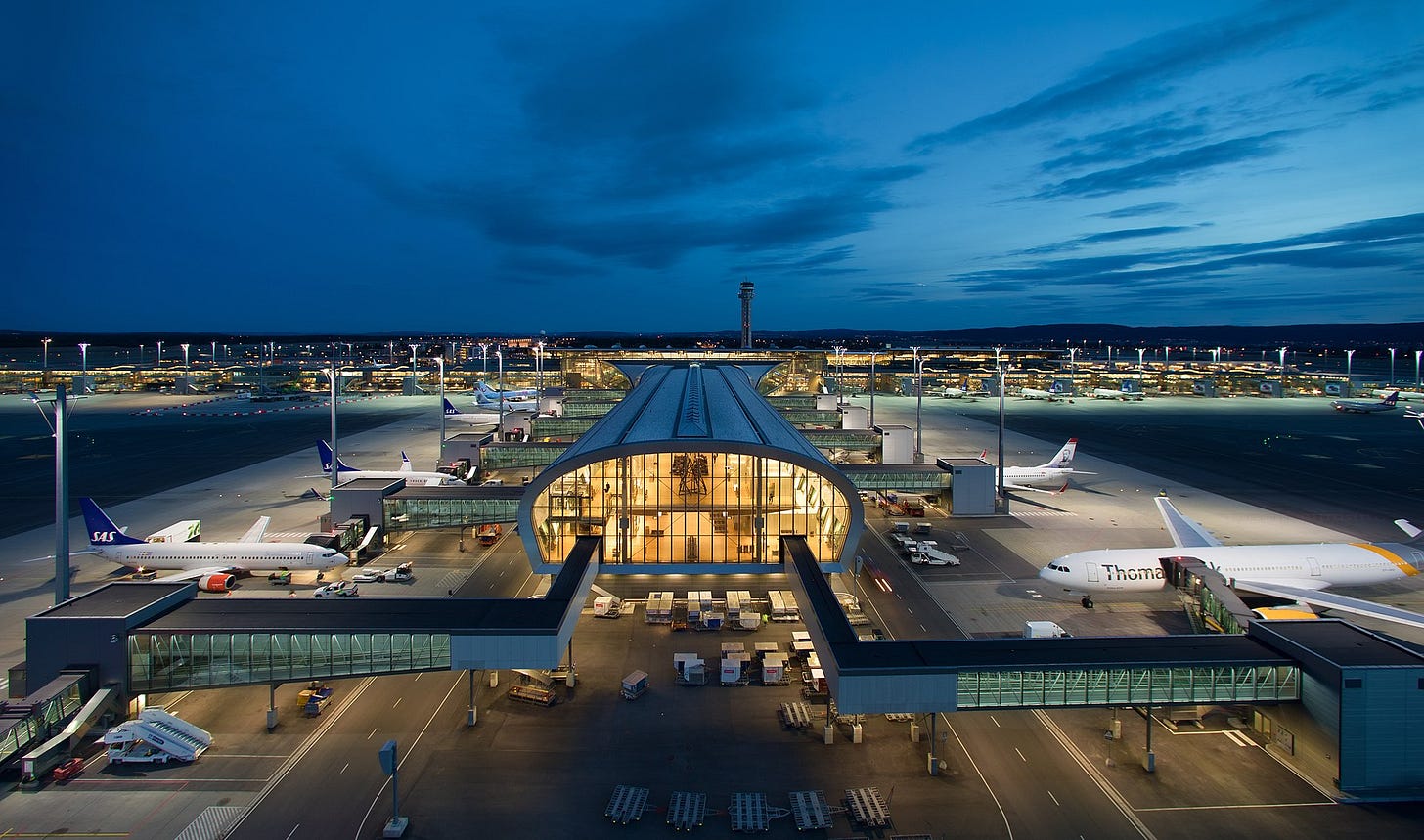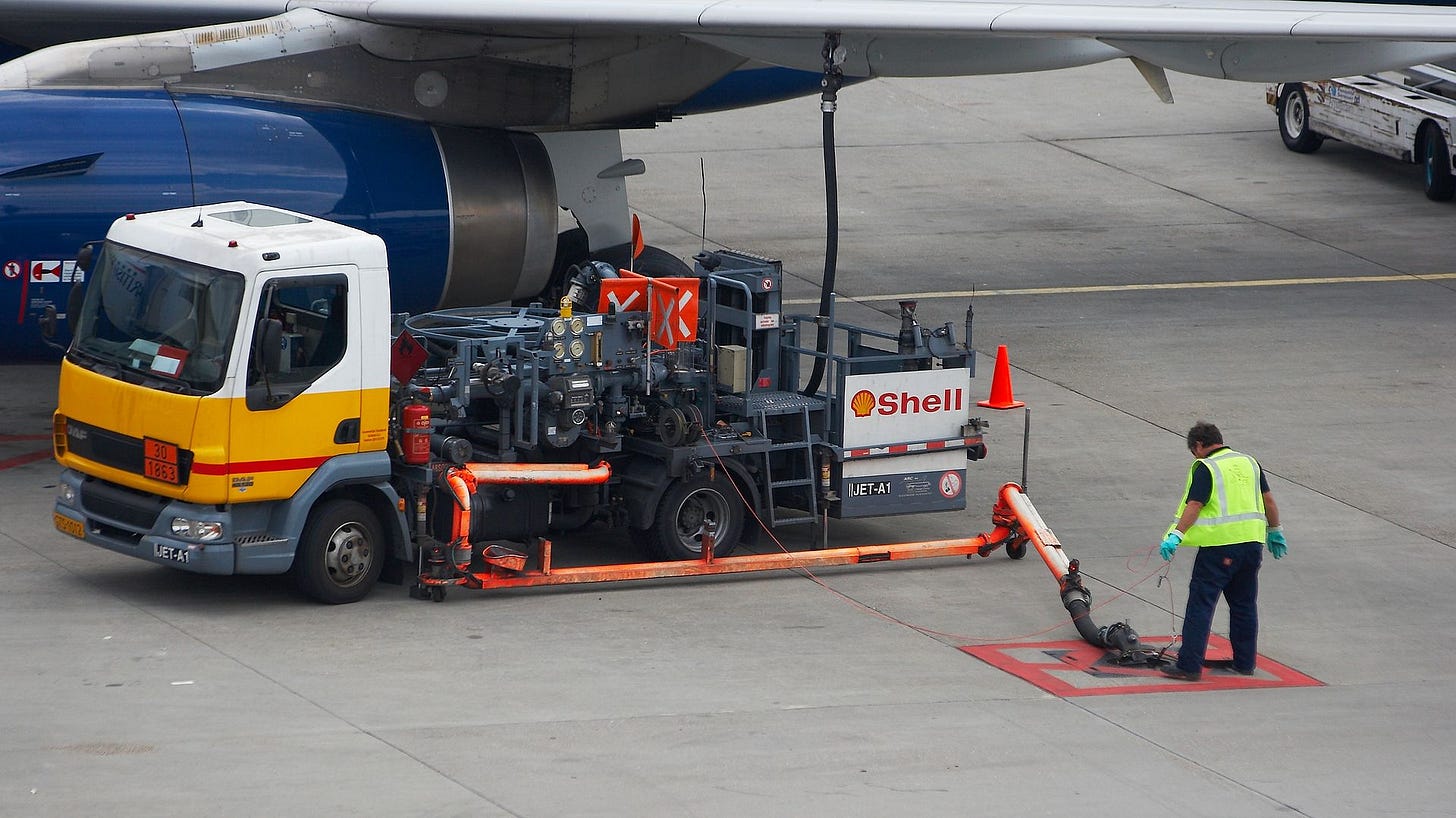We are looking for playtesters to play (for FREE) a new card game we are designing based on rockets 🚀. Interested?
Join here (WhatsApp group) or here (discord). You may join both. :)
Did you know most airplanes run on kerosene? Yep, it’s true! But it’s not the same kerosene you might use in a heater or lamp. Aviation kerosene is tougher, cleaner, and specially made to keep planes running smoothly in freezing skies and scorching engines. Let’s dive into the fascinating world of aviation fuel and see what makes it so special!
Basic Terms
Before we go deeper, it is important to cover some important terms related to fuel quickly. This will help you understand (and appreciate) the differences between different types.
Freezing Point
The freezing point of a fuel is the temperature at which it begins to solidify. For aviation fuel, this is super important because planes fly at high altitudes where temperatures can drop to -40°C or lower. If the fuel freezes, it can clog lines and stop engines—bad news for any flight! That’s why aviation fuels are designed to stay liquid in freezing conditions.
Octane Rating/Anti-Knocking
Octane rating measures how well a fuel resists knocking (or "pinging") in an engine. Knocking happens when fuel burns unevenly in the cylinders, which can damage the engine. A higher octane rating means smoother, more controlled combustion. For aviation, especially in piston-engine aircraft, high octane fuels are a must for performance and safety!
Flash Point
The flash point is the lowest temperature at which a fuel can vaporize enough to ignite when exposed to an open flame. Aviation fuels are designed to have a high flash point for safety, reducing the risk of accidental fires during handling and storage.
Volatility
Volatility refers to how easily a fuel evaporates. High volatility means the fuel turns into vapor quickly, which is useful for starting engines but can be risky due to potential vapor buildup.
Density
Fuel density is the measure of how much energy is packed into a given volume. Higher-density fuels provide more energy, meaning planes can fly longer distances. However, heavier fuel also means more weight, which affects the aircraft’s performance and payload.
Cetane Number
Similar to the octane rating, the cetane number measures how easily diesel or kerosene-based fuels ignite under pressure. Higher cetane numbers mean faster ignition, which is crucial for jet engines to perform reliably.
Additives
Additives are chemicals mixed into aviation fuel to enhance performance or safety. Examples include anti-icing agents to prevent freezing, antioxidants to stop gum formation, and corrosion inhibitors to protect fuel tanks.
Types of Aviation Fuel
Aviation fuel comes in different flavors (not literally, of course). Each type is tailored to meet the needs of specific aircraft and engines. Here are the most common ones:
1. Jet Fuel (Jet A and Jet A-1)
Who Uses It? Commercial jets, military aircraft, and some helicopters.
What Is It? Jet fuel is a high-grade kerosene mixed with additives to prevent freezing and corrosion.
Energy Content: Around 42-44 MJ/kg.
Pros:
Works well in extreme cold (-47°C for Jet A-1).
Widely available and cost-effective for large-scale use.
Cons:
Produces significant CO₂ emissions.
Reliant on fossil fuels.
Environmental Impact: The aviation industry is actively researching sustainable aviation fuels (SAFs) to cut emissions.
2. Avgas (Aviation Gasoline)
Who Uses It? Smaller planes with piston engines, like private or training aircraft.
What Is It? A leaded gasoline designed to deliver high performance.
Energy Content: About 44-46 MJ/kg.
Pros:
Great for smaller engines needing high octane levels.
Reliable for short trips and light planes.
Cons:
Contains lead, which is harmful to the environment.
More expensive than car gasoline.
Environmental Impact: Efforts are underway to phase out leaded avgas for greener alternatives.
3. Sustainable Aviation Fuels (SAFs)

Who Uses It? Experimental flights, eco-friendly airlines, and the future of aviation.
What Is It? Made from renewable sources like algae, cooking oil, or agricultural waste.
Energy Content: Comparable to Jet A-1, but varies by production method.
Pros:
Reduces carbon emissions by up to 80%.
Can often be blended with traditional jet fuel.
Cons:
Expensive to produce.
Limited availability.
Environmental Impact: SAFs are a game-changer, but scaling them up to global use is a challenge.
How Different Aircraft Use Fuel
Commercial Jets: Use Jet A-1 for its high energy and performance at high altitudes.
Private Planes: Depend on avgas because their piston engines need a fuel that ignites easily.
Helicopters: Often use Jet A-1 or Jet B (a blend of kerosene and gasoline) for flexibility in cold climates.
Experimental Aircraft: Increasingly rely on SAFs or even electric power to explore greener skies.
The Future of Aviation Fuel
The push for cleaner skies is on! While kerosene-based fuels are still dominant, SAFs and electric propulsion are paving the way for a greener industry. Advanced research into hydrogen fuel is also gaining traction, promising zero-emission flights in the future.
So next time you hear the roar of a jet overhead, remember: it’s not just the engineering marvel keeping it flying—it’s also the fuel working behind the scenes!




